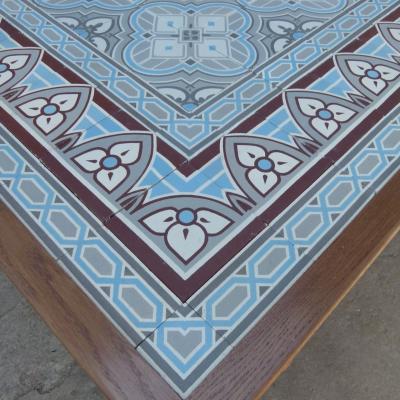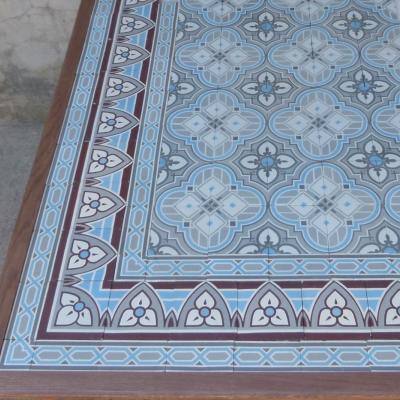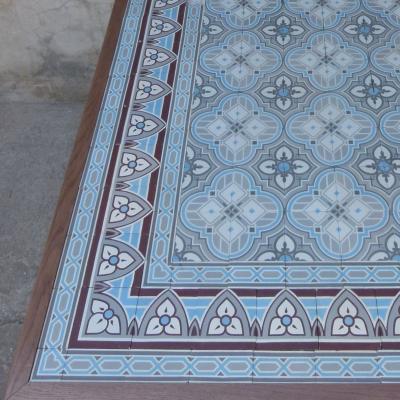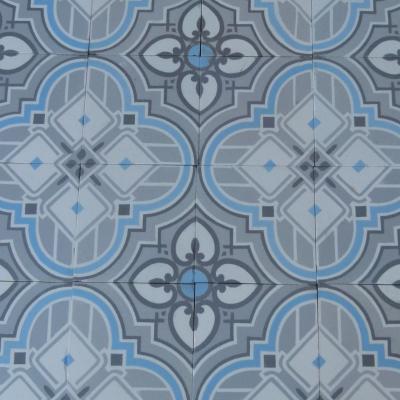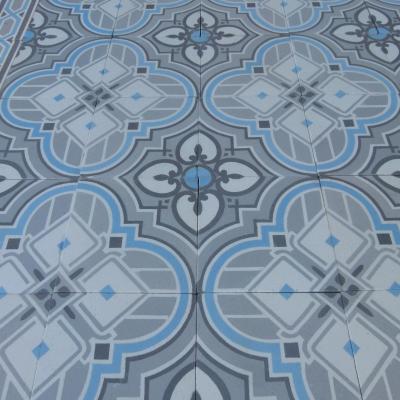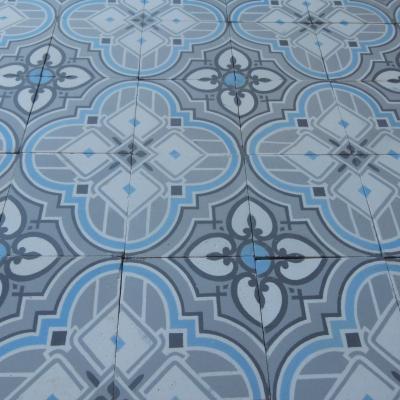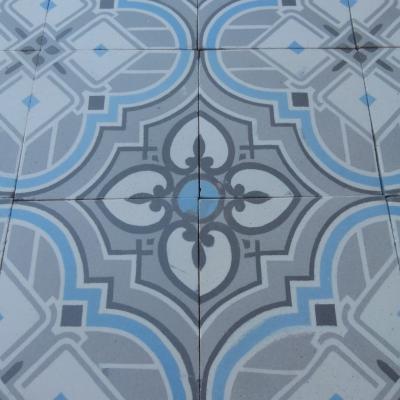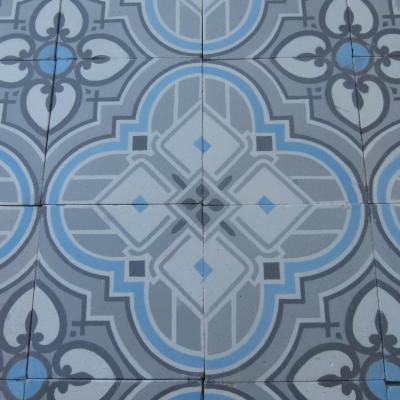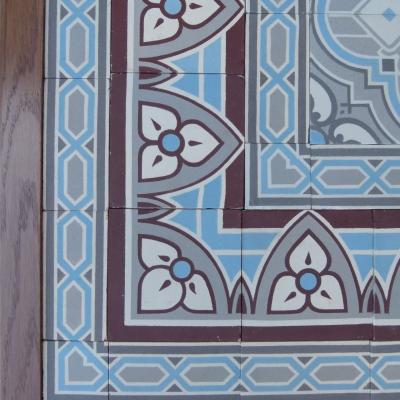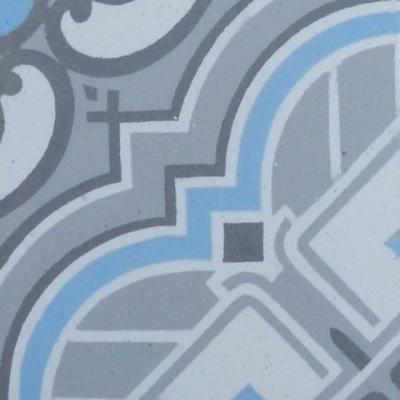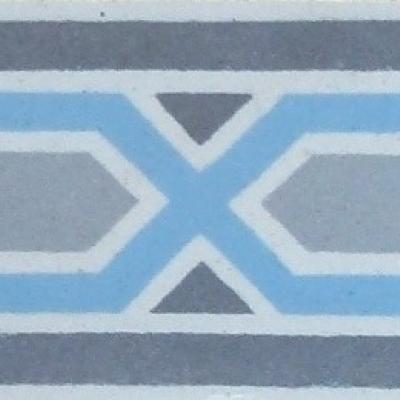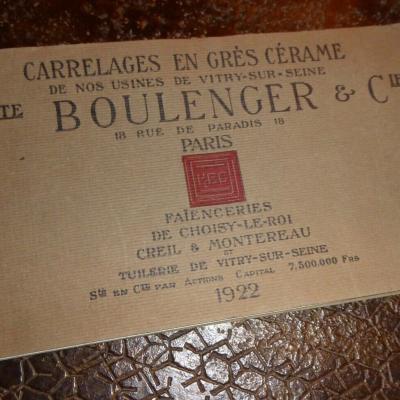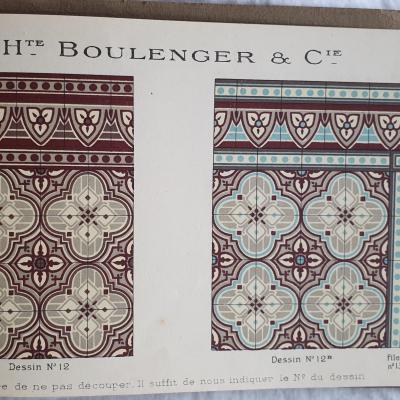A 13.4m2 early art deco Hippolyte Boulenger ceramic floor - 1922
More widely known internationally for outstanding ceramic work with faience, tableware, kitchenware and decorative pieces Hippolyte Boulenger also produced ceramic floor tiles in their usine at Vitry-sur-Seine, France. A wealth of information and images of Boulengers work is available on the internet and is worthy of a browse over a glass of wine. His work is not only exquisite but now highly in demand amongst collectors and antique dealers.
After his death the business continued to thrive through and beyond the Belle Epoque and this reclaimed ceramic floor was manufactured in 1922 by the company. We include scans of the tiles in their period catalogue.
14.2cm sq field and large borders and 14.2cm x 7.1cm small borders, the floor totals 13.4m2/144sq ft.
Arriving ready to re-lay, the design bears all the DNA of early art deco styling, the palette is cool. The tiles have restored beautifully of their old mortar and years of engrained dirt and wax. We have recovered two of the large border corners, so two will require mitre cutting, and four of the small border corners.
These ceramics are in excellent condition, as can be seen in the high resolution photographs of a random section of the restored floor. Some tiles display edge nibbles and there are the occasional small groutable chips on others, all of which adds to an appealing antique patina, expected of a floor 102 years old but good for another 102 years.
Tile quantities, give or take one or two:-
FIELD – 530 tiles – 10.7m2 / 115 sq ft
LARGE BORDERS - 55 tiles plus 2 corners – 1.1m2 / 12.4 sq ft. – 8 linear metres / 26.2 linear ft.
SMALL BORDERS - 150 tiles plus 4 corners – 1.5m2 / 16 sq ft. – 21.6 linear metres / 94.4 linear ft.
NOTE
Antique tiles were most commonly made in single or two tile moulds. Before current computer automation methods their moulds were made my hand and the colour slips mixed by eye. Kiln temperatures could also be variable, as could the firing time. The result is that often tiles display subtle size and thickness variations and there can be tonal variations in colours, owing to the slip mixing and/or firing time. All of this makes these handmade tiles unique and adds to their charm. Some floors display their subtle variations in size and tones, some not, but when photographing we always take a random section of the floor so that it is representative of the whole. A tiler should always dry lay a section of the tiles to familiarise himself with them before starting to fix lay.
CE311



